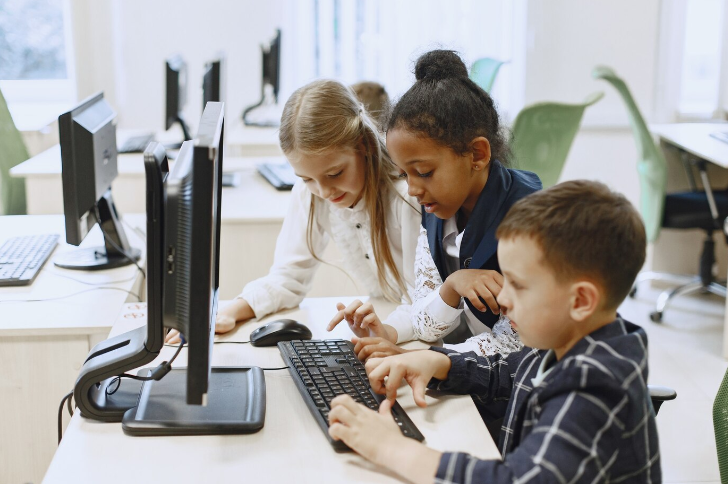
Smart Classrooms to Integrating Technology for Engaging Learning Environments
Education is changing and so are the classrooms where kids learn in the fast-paced environment of today. Smart classrooms—a new age of learning environments—are resulting from contemporary technology replacing traditional chalkboards and overhead projectors. These areas are meant to encourage interaction, creativity, and interactive learning by means of flawless technological integration. The move toward learning smart classroom settings is more than simply a fad; it's a necessary development changing how teachers instruct and how students learn.
Smart Learning Classrooms:

Our everyday lives now increasingly revolve around technology, which is clearly influencing schooling. Technology has turned conventional teaching approaches into more dynamic and participatory experiences, from digital textbooks to online tests.
These developments are used in a learn smart classroom to provide an immersive learning environment fit for many learning styles. Digital projectors, iPads, and interactive whiteboards replace out-of-date technologies so instructors may show the material in more interesting ways. Direct interaction with the content allows students to engage in more hands-on, memorable learning.Establishing an interesting classroom environment:
A smart classroom is about establishing a learning environment that supports teamwork, critical thinking, and problem-solving, not just about including the newest devices. Technology allows instructors to create more engaging and customized courses. Real-time tests, group projects employing collaborative technologies, and a variety of internet resources let students improve their grasp of the topic by means of participation. This strategy not only makes studying more interesting but also helps students acquire critical abilities that will benefit them outside of the classroom.
Lighting: Smart Classrooms' Unsung Hero:
Although debates on smart classrooms usually involve technology, the value of good illumination cannot be emphasized enough. Lighting plays a major role in creating an atmosphere fit for learning. Essential for a good learning environment are attention, less eye strain, and even improved mood—all of which the appropriate lighting may help with. Lighting for your room may significantly affect how students interact with their courses, whether that means well-placed LED lights or natural light coming in through big windows.
Interactive tools' impact:
A learn-smart classroom revolves mostly around interactive technologies. These resources provide students the chance to interact with the content in a more meaningful manner than only presentations and lectures would allow. Interactive whiteboards let lecturers dynamically show material using animations, videos, and real-time data to highlight difficult ideas. Learning becomes a more tactile and engaging experience when students engage with the material by coming close to the board. These technologies improve students' memory as well as make classes more interesting.
Changing Your Approach to Learning:
A learn-smart classroom's capacity to accommodate several learning styles is one of its biggest benefits. Many times, based on a one-size-fits-all approach, traditional classrooms might leave certain children unable to stay up. However, smart classrooms provide a more customized and adaptable learning environment. Interactive presentations help visual learners; podcasts and recorded lectures help those who learn best by hearing. Learning best via hands-on activities, kinesthetic learners may interact with interactive tools, allowing them to manipulate and investigate the content more physically.
Getting Students Ready for Tomorrow:
The skills children need to succeed are changing just as fast as the world is changing. A learn-smart classroom helps them by imparting not just the basic curriculum but also critical thinking, teamwork, and digital literacy—which equip students for the future. In today's employment market, when companies are seeking applicants who can be creative, team players, and easily negotiate in digital settings, these abilities are vital. Incorporating technology into the classroom lets teachers assist their students in acquiring these abilities in a practical setting.
The Increasing Value of E-Learning Content:
Apart from smart classroom technology, the demand of e-learning materials is growingly important. Demand for top-notch, interesting e-learning resources has skyrocket as education moves toward digital media. Learning Management Systems (LMS) and Enterprise Resource Planning (ERP) tools must be implemented by schools to effectively handle resources and operations. These instruments are crucial in offering e-learning materials that are both efficient and easily available, therefore increasing the return on investment (ROI) in educational technology. Moreover, the incorporation of interactive flat panels (IFPs) improves the delivery of e-learning materials, so transforming courses into more dynamic and customized fit for particular learning requirements.
ERP's And LMS's Indispensible Nature for Educational Institutions:
ERP and LMS systems are becoming increasingly important to schools as they help to maximize instructional results and simplify their processes. Increased productivity and better resource allocation follow from these systems' complete solution for handling administrative chores, course materials, and student data. Integrating these solutions becomes essential to preserving competitive standards and raising ROI as schools keep their digital transformation under progress. Schools providing professional services in digital transformation gain much from these systems since they guarantee the seamless delivery of both conventional and best courses for software development, therefore arming students for the challenges of the modern workforce.
Conclusion:
The switch to learn smart classrooms marks a change in the delivery of education, not just a technological improvement. Smart classrooms are preparing students for the demands of the future by designating interesting, interactive, and flexible learning spaces. The value of careful design in these areas—including lighting for your room—will only increase as technology develops. Companies like Fastech are leading the way in building these contemporary learning spaces, making sure the classrooms of the future are ready to satisfy the demands of today's students.












